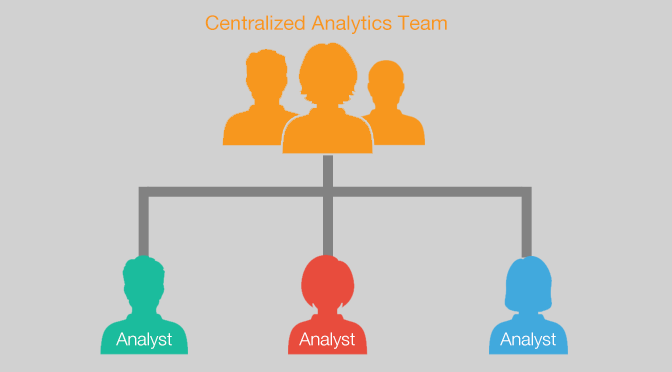At E-Nor, we get to interact with the best clients on earth (and off planet!). They all have different needs and requirements and move at different paces. But I’m noticing a nice upward trend among some of our larger clients lately.
Top of the Pyramid
We often refer to our Digital Analytics Optimization pyramid. It’s our framework that demonstrates the different levels of analytics achievement.

At the bottom are the common data problems that bring many clients to us for custom tracking solutions. The middle is where clients contend with the data they’d never been able to get before. Moving upward, reporting solutions organize all this new data and present it in meaningful ways. At the top is what everyone strives for and so few obtain – an analytics culture.
For the larger organizations I work with, it can take a long time to make it to the top. Years – if they ever make it. They have a lot of people with defined roles who all need to make adjustments around new information available to them and the organization. Many will struggle to change how they work to take advantage of all this new data. But, I’ve noticed a few companies finding ways to fast track the path to the peak recently. And they aren’t destroying existing culture to do it.
CATs: Centralized Analytics Teams
From an external point of view, it has been fascinating to watch centralized analytics teams (CATs) form within organizations that already have analysts. In a few instances, new teams have been formed to serve existing analysts who already work within separate business units. The teams are stocked with personnel who could be or have been analysts themselves, but serve as extensions of the E-Nor team when it comes to implementing solutions. These teams have been valuable during and after implementation as a hub for data and analysis that would have been isolated in silos in the past. They are also the maintenance people who understand the specific elements being tracked, why each element is tracked, and can perform the initial diagnosis when changes happen that disrupt custom tracking. They manage users and permissions and maintain consistency across platforms. You can see how a team like this ensures that the culture is sustainable. They probably won’t be the first to notice that some element needs to be tracked differently because of a site change within a specific product line or business division, but they will be the first resource for the business analysts within individual units.
Example of CAT serving business unit analysts and upper management
Mentors
As organizations race to the top of the pyramid with the help of their CATs, CAT members act as mentors to the analysts within the business units. As the CATs witness multiple custom tracking implementations across separate web and mobile properties, they become very good at understanding that we can track anything, but that isn’t always the most helpful or efficient way to move forward – or upward – to follow our metaphor. Being removed from individual business units helps the CATs keep a broader perspective and places them in a position to remind the business analysts and managers that specific KPI data is what is necessary for upper management decisions. The rest is noise. And when the CATs and business unit analysts are really clicking, they are anticipating the analysis and insight and delivering it to management directly with the data-heavy reports serving primarily as support for what has already been learned.
Academic Model
In a way, the CATs also become faculty. They are positioned as analysis experts within the organization. For them to be most effective, they need to distribute their knowledge in all directions. Larger organizations usually have multiple internal messaging systems that can be used in a number of ways to remind others of their availability. In fact, one organization even referred to their team’s “office hours” as the appropriate time for anyone to check in with them on a relatively unscheduled basis. Furthering the academic model, they are developing the “text book” that is based on the documentation E-Nor provides as part of their projects. It will consolidate the documentation we provide and layer in appropriate implementation background information and existing institutional knowledge.
Resistance
Resistance to change in large organizations can wreck the efforts of a well-intentioned effort. Approaching cultural shift with a healthy attitude and understanding that it is a long term process goes a long way toward ensuring the initiative’s success. However, not everyone is always ready for change and sometimes rules are put in place to make sure change happens a certain way or at a specific pace. One way we’ve seen this managed is for the CAT to enforce certification across analysts. A generous amount of time allotted for certification is appreciated especially when the CATs are there for help. Also, rewarding those who achieve certification earliest can create just enough peer pressure to prompt remaining team members to get certified, too. Rewarding everyone when all are certified ensures it remains a team effort that ultimately benefits the entire organization.
The best way to make sure that a CAT can lead you to the top of the pyramid is to make sure it is fueled to go the distance and understands its role within the organization. Enough resources and authority have to be given to the team to push change. Your CAT’s top dog also needs to have the ear of executives. But the team can’t get too full of itself. Employees of organizations with enough resources to form a dedicated analytics team outside of individual business units need to remember that they could be seen as extraneous additions to an extraneous team. It only takes a turn in the economy or a different leader’s vision to send them packing. Fortunately, knowledge is power and a team built to capture and spread it should always be indispensable.


















